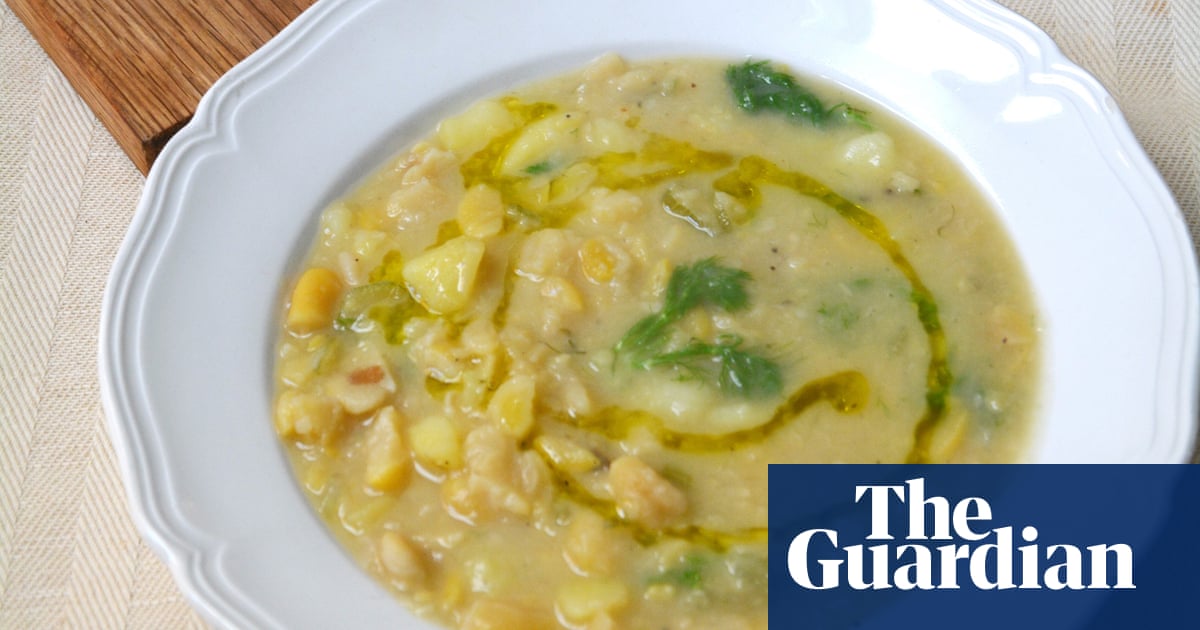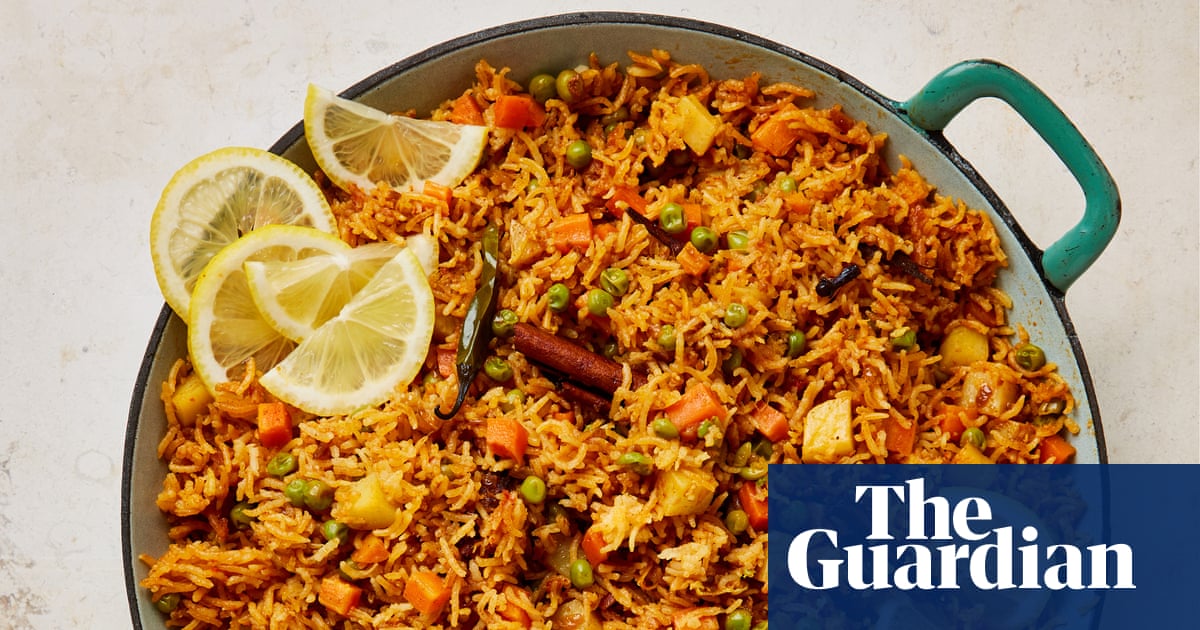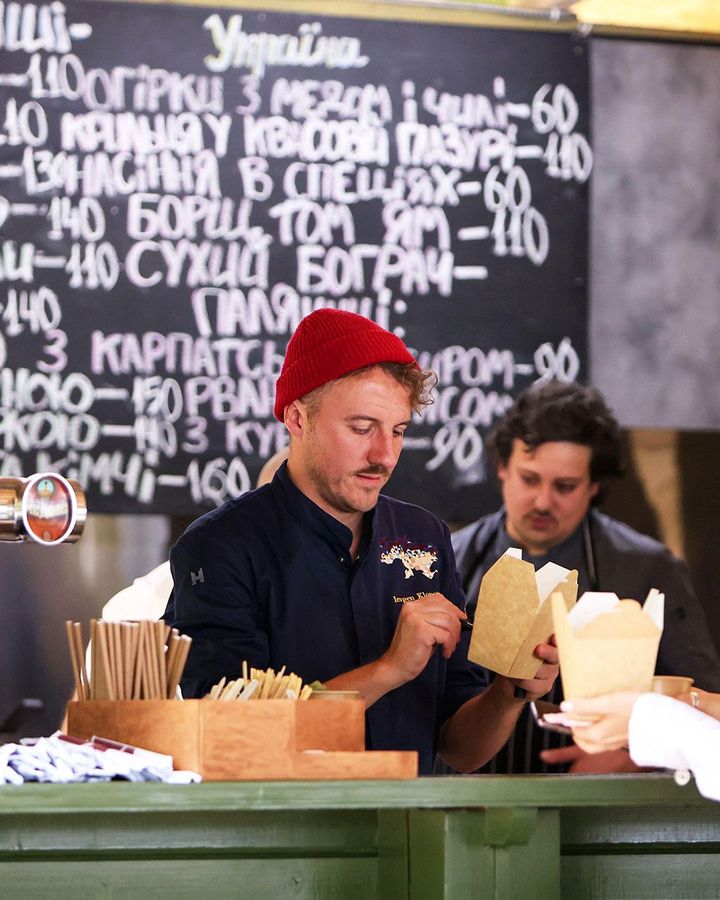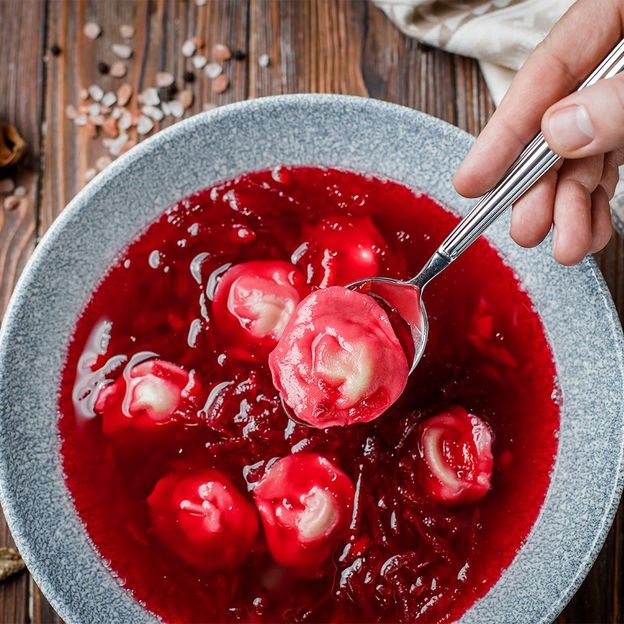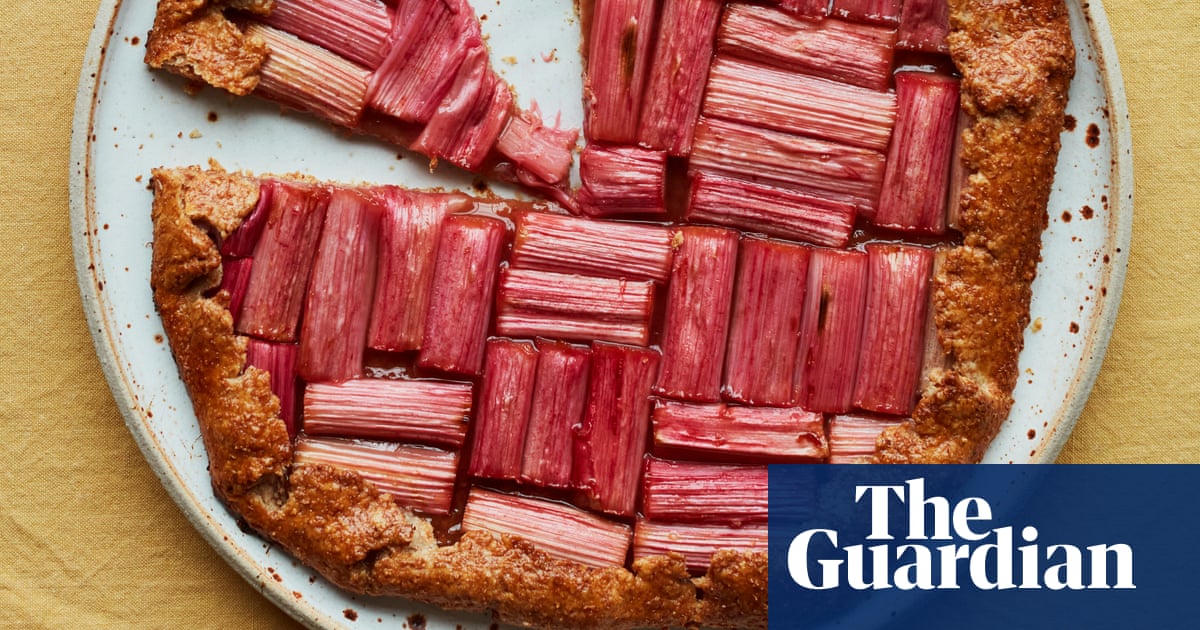Those workhorses of the kitchen – common ingredients such as apples, carrots, potatoes and zucchini – get their moment in the spotlight in Clare Scrine's second cookbook, The Shared Kitchen: Beautiful Meals, Made From Basics.
It's a follow-up to The Shared Table, which celebrated vegetarian and vegan share-house classics such as mac and cheese, baked beans and brownies.
This time, the Brisbane-based writer has focused on creative ways to make staple ingredients special, while reducing food waste. Here are some of her favourite recipes – all meat-free and many suitable for vegans.

Zucchini and mozzarella ratatouille with gremolata
This dish makes a beautiful centrepiece to a shared meal or a great addition to a potluck dinner and, despite its simplicity, I think it really makes the zucchini shine. I love serving it alongside garlic bread and a simple leafy salad. If you have a good ovenproof frypan, this is a great one-pan meal.
INGREDIENTS
- 60ml (¼ cup) olive oil, plus extra for drizzling
- 1 onion, finely diced
- 5 garlic cloves, thinly sliced
- 2 x 400g cans crushed tomatoes
- 1 tsp dried or fresh oregano
- 2 tsp brown sugar
- 1 tbsp balsamic vinegar
- salt and pepper
- 3-4 zucchini, sliced into 2mm thick rounds
- 200g ball of mozzarella, thinly sliced
Gremolata
- 80g (½ cup) almonds, toasted and roughly chopped
- zest and juice of 1 small lemon
- 60ml (¼ cup) olive oil
- salt and pepper
- ½ bunch of basil, leaves roughly chopped
METHOD
- Heat the olive oil in an ovenproof frypan over medium heat. Add the onion and cook, stirring frequently, for 10 minutes or until starting to brown. Add the garlic and cook for two minutes or until fragrant, then add the tomatoes and oregano and cook, stirring well, for five minutes. Add the brown sugar, vinegar and some salt and pepper, and stir well to combine. Add a splash of water, then reduce the heat to a gentle simmer and cook for 10-15 minutes, until very thick and rich.
- Meanwhile, preheat the oven to 200C fan-forced (220C conventional).
- Toss the zucchini and mozzarella in a generous drizzle of olive oil. Season with salt and pepper.
- Take the pan off the heat, check the seasoning and adjust if necessary. Starting at the outer edge, arrange the zucchini in concentric circles, overlapping each slice by about a third and placing at an angle so they nestle in the sauce. Add a slice of mozzarella every three to four slices of zucchini. Transfer to the oven and bake for 20-30 minutes, until the top is brown and the sauce is bubbling up through the zucchini.
- Meanwhile, combine all the ingredients for the gremolata in a mortar and, using the pestle, pound for one to two minutes to create a chunky paste. If you don't have a mortar and pestle, simply add the ingredients, except the juice and oil, to a large chopping board and chop until well combined. Add to a bowl and stir through the juice and oil. Taste the gremolata and adjust the seasoning if necessary. Add an extra drizzle of olive oil or a tablespoon of water to loosen the gremolata to a spoonable consistency. Serve the ratatouille fresh from the oven, dotted with the gremolata and an extra drizzle of olive oil.
Swaps:
Vegan – mozzarella: roasted eggplant slices, cooked potato slices or vegan cheese
Almonds – toasted walnuts or pumpkin seeds (pepitas)
Zucchini – eggplant, mushrooms, capsicum or fennel
Serves 4-6

The smoky, salty nuts finish off this salad beautifully with some welcome crunch. Photo: Yaseera Moosa
Shaved broccoli and avocado salad
Please. Make. This. Salad. It's so easy and quick to make (especially if you use a mandoline or food processor to chop all the broccoli), as well as being delicious and moreish, and a perfect way to eat a big bowl of raw vegetables when that urge strikes. The dressing really carries the salad – it's super hearty and coats everything generously in a soft green blanket. The smoky, salty nuts finish it off beautifully with some welcome crunch. You could add some extra vegies or sub out some of the broccoli for peas or broad beans, and serve with some falafels or vegie patties for a delicious dinner.
INGREDIENTS
- 100g (⅔ cup) almonds, roughly chopped
- 1 tbsp soy sauce or tamari
- 600g broccoli (about 2 small-medium heads), stalks and florets finely chopped or sliced
- ½ red onion, finely diced
- 1½ avocados, chopped into 1cm cubes
- 20g (1 cup) flat-leaf parsley, chopped
Chickpea dressing
- 400g can chickpeas, including the soaking liquid
- 1 tbsp tahini
- ½ avocado
- 1 tbsp maple syrup
- 1 tbsp lime juice, plus extra if needed
- 30g (1 cup) coriander leaves
- 2 tbsp soy sauce or tamari
- salt and pepper
METHOD
- Heat a frypan over medium heat and add the almonds. Cook, stirring often, for a few minutes, until they begin to brown. Turn off the heat, drizzle over the soy sauce and stir to combine – the soy sauce will sizzle and evaporate quickly. Remove the almonds from the pan and set aside to cool.
- Prepare the chickpea dressing by blending all of the ingredients in a blender or food processor to a thick, smoothie-like consistency. Taste and add additional seasoning or lime juice if needed. The dressing is mild in flavour, but it's important that it has a hum of seasoning and citrus.
- Combine all the remaining salad ingredients in a large bowl, mixing them well to combine. Pour the dressing over the top and toss to coat the vegies. Transfer to a serving dish, or wipe down the edge of the bowl you're using. Scatter over the toasted almonds and serve.
Serves 6-8 as a side

This cauli salad makes a wonderful and healthy meal. Photo: Yaseera Moosa
Sticky sesame cauliflower with noodles and herby salad
When you want to feast on something fresh and light but packed full of flavour, this is a perfect dish. Far from a traditional Thai larb, with no pork, or ground sticky rice, it is still reminiscent of this famous salad – and craving it inspired me to make this for the first time. And with quick-pickled cucumbers, shredded cabbage and dressed rice noodles, it's such a wonderful and healthy meal. Pre-mixed Chinese five spice is a cheat's addition to the cauliflower, but you can make up your own with star anise, cloves, cinnamon, fennel and pepper (or as many of these spices as you have) if you don't have a jar of the stuff on the go.
INGREDIENTS
- 3 tbsp sesame seeds
- 3 tsp Chinese five spice
- 2 tsp smoky paprika
- 60ml (¼ cup) olive oil
- 2 tsp brown sugar
- 2 tbsp soy sauce or tamari
- 500g cauliflower (about 1 large head), chopped into small 2cm chunks
- 40g (¼ cup) roasted peanut halves
Herby salad
- 2 tsp sesame oil
- 1 tbsp rice wine vinegar
- salt and pepper
- 3 small cucumbers or 1 large, sliced into shards on the diagonal
- 200g thick "pad Thai" rice noodles
- bunch of coriander, leaves picked
- bunch of mint, leaves picked
- ½ red onion, thinly sliced
- ¼ white cabbage, shredded
Dressing
- 60ml (¼ cup) vegan fish sauce
- juice of 2 small limes
- 1 tbsp brown sugar
- 2 garlic cloves, finely chopped
- ½ bird's eye chilli, finely chopped (optional)
METHOD
- Preheat the oven to 200C fan-forced (220C conventional). Line a large baking tray with baking paper.
- In a small bowl, mix together the sesame seeds, spices, olive oil, sugar and soy sauce or tamari to form a thick paste. Spread the cauliflower across the prepared tray and dollop the marinade over the top. Use your hands to toss the cauliflower and coat it in the mixture. Transfer to the oven and bake for 20-30 minutes, turning the cauliflower halfway through cooking, until starting to char and the pieces have shrunk to about one-third of their original size. Add the peanuts to the tray and toss well. Return to the oven for a final five minutes, to warm the nuts.
- Meanwhile, to make the herby salad, combine the sesame oil, rice wine vinegar and a generous pinch of salt and pepper in a bowl. Add the cucumber and toss to coat, then set aside to pickle until ready to serve.
- In a separate bowl, whisk together the dressing ingredients and 80ml (⅓ cup) of water and set aside.
- Cook the noodles according to the packet directions, then drain under cool running water to prevent the noodles becoming gluggy. Toss the noodles with the herbs and onion, along with about half the dressing. Transfer to a serving bowl and top with the warm cauliflower, cabbage and quick-pickled cucumber. Drizzle the remaining dressing over the top and serve.
Serves 4-6

Toum and zaatar combine beautifully in this Middle Eastern-inspired galette. Photo: Yaseera Moosa
Tomato and halloumi galette
In this Middle Eastern-inspired galette, toum and zaatar combine beautifully with halloumi and tomato, encased in an easy home-made puff pastry. The tomato hides all these secret additions, so when you eat it there are heaps of unexpected flavours and textures that make it a delight to eat. It's a perfect vegetarian main or addition to a spread. It can be made ahead and eaten at room temperature, and it's pretty sturdy too, so can be easily transported to the park for a picnic.
INGREDIENTS
- 600g tomatoes (mix of colours and sizes if possible), sliced (or halved if using cherry tomatoes)
- 1 tsp salt
- 200g toum (Lebanese garlic dip)
- 250g halloumi, sliced into 5mm thick slabs
- 2 tsp zaatar
- 1 tsp fennel seeds
- 1 egg, beaten
Simple puff pastry
- 150g salted cold butter, cut into cubes
- 260g (1¾ cups) plain flour, plus extra if needed and for dusting
- ½ tsp salt
- 80ml (⅓ cup) ice-cold water, plus extra if needed
To serve
- handful of oregano and basil leaves
- olive oil
- extra zaatar
METHOD
- To make the pastry, place the butter, flour and salt in a large bowl and use your fingers to rub the butter into the flour until well distributed but with some large chunks remaining. This can also be done in a food processor using the pulse function. Add the ice-cold water and bring the dough into a rough ball with your hands, working it just enough so that it smooshes together, adding a little extra water or flour as needed.
- Transfer the dough to a lightly floured work surface and roll it out to a large square, about 2mm thick. Fold the dough over itself a few times to form a rough cube (this creates layers of pastry, which will help it puff up when cooked). Wrap the pastry in a clean tea towel or plastic wrap and set aside in the fridge for about an hour, until very firm. You can make the dough up to two days ahead.
- Meanwhile, transfer the tomato to a colander set over a large bowl. Sprinkle over the salt, toss gently to combine and leave to drain for 15-20 minutes – this will prevent your galette having a soggy bottom.
- Once your dough is firm, preheat the oven to 200C fan-forced (220C conventional). Line a large baking tray with baking paper.
- Roll out the pastry on a lightly floured work surface to a 45cm large circle. Gently roll it up onto the rolling pin, then unroll onto the prepared tray. Don't worry if the pastry is bigger than the tray, as you'll fold in the edges.
- Spread the toum across the centre of the pastry, leaving a 5cm border. Place the halloumi on top and sprinkle with the zaatar and fennel seeds. Give the tomato a gentle toss to extract any final liquid, then arrange on top of the halloumi. Fold over the pastry edge to form a galette and brush with the beaten egg. Transfer to the oven and bake for 25-35 minutes, until the crust is deep golden brown. Serve warm or at room temperature, topped with oregano and basil leaves, a drizzle of olive oil and a sprinkling of zaatar.
Swaps:
Vegan – simple puff pastry: store-bought vegan puff pastry; omit the halloumi or use vegan cheese, caramelised onions or roasted eggplant slices
Toum – 80g (⅓ cup) garlicky aioli or 60ml (¼ cup) olive oil blended with 3 garlic cloves and a pinch of salt
Serves 4-6
This is an edited extract from The Shared Kitchen by Clare Scrine, published by Smith Street Books, distributed by Thames & Hudson Australia, AU$45.00. Buy now
"food recipes" - Google News
February 26, 2023 at 07:13PM
https://ift.tt/xbSDrBu
Basic to beautiful: Four meat-free recipes from The Shared Kitchen cookbook - Good Food
"food recipes" - Google News
https://ift.tt/061jX98
https://ift.tt/X8IPznd
